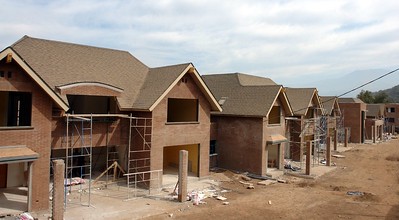Last month, the Scio Township Board of Trustees denied a proposal to build about three dozen townhomes on a 5-acre parcel on Zeeb Road. The housing development, named Arbres Grove, would have been built near other established developments in the area, including Parkwood Condominiums and the Polo Fields.
Housing is one of Washtenaw County’s critical needs and has been for the past decade or more. Lack of living space has increased the price of existing homes throughout the county. This makes it difficult for current residents to find adequate space, whether they’re trying to upsize, downsize, or enter the market as a first-time buyer.
If you haven’t yet read the czb Report , I encourage you to do so. It was written nearly a decade ago and predicted – with alarming accuracy – the circumstances Washtenaw County now finds itself in. The report, entitled “Housing Affordability and Economic Equity – Analysis” focused on the status of housing here, along with the attendant contributors to what the consultants felt was a brewing crisis.
How bad is the situation in Washtenaw County? Using Federal Reserve Economic Data (FRED) collected by the Federal Reserve Bank of St. Louis, Washtenaw County cities and townships issued 1,597 building permits for private residential structures in 2023. This is the highest number of such permits issued since 2005, when cities and townships here issued 1,676 building permits for private residences.
Permitting for private residences peaked in 1998, when 2,902 permits for private home construction were issued. You can argue that the 2001-02 recession, the Great Recession, and the COVID-19-induced recession of 2020 took a bite out of builders’ appetites to roll the dice on homebuilding. Even PulteGroup, one of the area’s largest home builders pulled up stakes and moved to Atlanta in 2013.
Homebuilding in Washtenaw County should be in high gear
Most areas of Washtenaw County have recovered from the Great Recession. With the exception of the drive-by recession in 2020, the economy has been nothing short of spectacular since 2010. Homebuilding in one of the most desirable counties in Michigan should have taken off.
But it didn’t, and it isn’t going to. But why?
Looking at the FRED data for residential construction starts in Washtenaw County, you’ll notice a distinct drop in 2004 in the number of building permits for private homes. This occurred immediately following the adoption of the greenbelt.
Residential building permits in Washtenaw County have struggled to gain traction, despite high demand for new homes in all price ranges here. The City of Ann Arbor has permitted mostly high-value (either high-cost or high-rent) housing units. Comparatively few lower-cost housing units or “affordable” housing units (where the ownership or occupancy of the unit is income-restricted) have been built in the city since 2004. (One of the known impacts of a greenbelt, by the way, is a decrease in new construction.)
When developers can’t build in the city, they target adjacent townships for these projects. Townships and smaller cities can’t take on large housing development projects, often because they lack the critical infrastructure (roads, sewers, water service, stormwater management, fire service, police protection, sanitation services) to support them. In Arbres Grove’s case, neighboring residents expressed concerns about flooding, drainage issues, and sewage backups, in addition to standard concerns about tree removal.
Three dozen housing units does not qualify as a huge development and the townships would welcome the increased tax base. But the reluctance of the Township to move forward with the project illustrates how hard it has become to get even small housing projects off the ground in Washtenaw County.
Housing is the key to economic growth in Washtenaw County
The FRED data show how long it has taken to recover the number of housing starts here. And it’s largely because the townships don’t have the resources to take on the challenges that large-scale residential developments pose. Unfortunately, Washtenaw County needs large-scale housing developments to lower the cost of housing here and to ensure adequate housing stock to support economic growth.
Until someone unlocks the mystery of how to increase housing starts to a meaningful level in the townships, and to support demand for housing throughout the county and for residents (and would-be residents) of all income levels, Washtenaw County is collectively stuck.
Lack of affordable housing means that the graduates of our universities and even our community college have nowhere to go but away after graduation. The high cost of housing makes Washtenaw County less attractive for new employers and new industries. (Why would anyone locate their company here when there is no possibility their workforce can find housing here?) It also makes it more difficult for people with lower household incomes to stay here. Conversions from owner-occupied housing to rentals rarely convert back, which further limits available opportunities for would-be buyers. And the overall instability of rents makes it hard for renters to commit to staying here.
This is why Washtenaw Community College needs to concentrate on delivering programs that prepare students for high-wage, high-demand jobs. Until we can change the housing dynamic that has been established here, living in Washtenaw County is going to be rather expensive. If we want to hang onto our prime age workforce, they’re going to need to make enough money to avoid being priced out of the area.
Once they’re gone, they’re not coming back.
Photo Credit: Concrete Forms , via Flickr


















